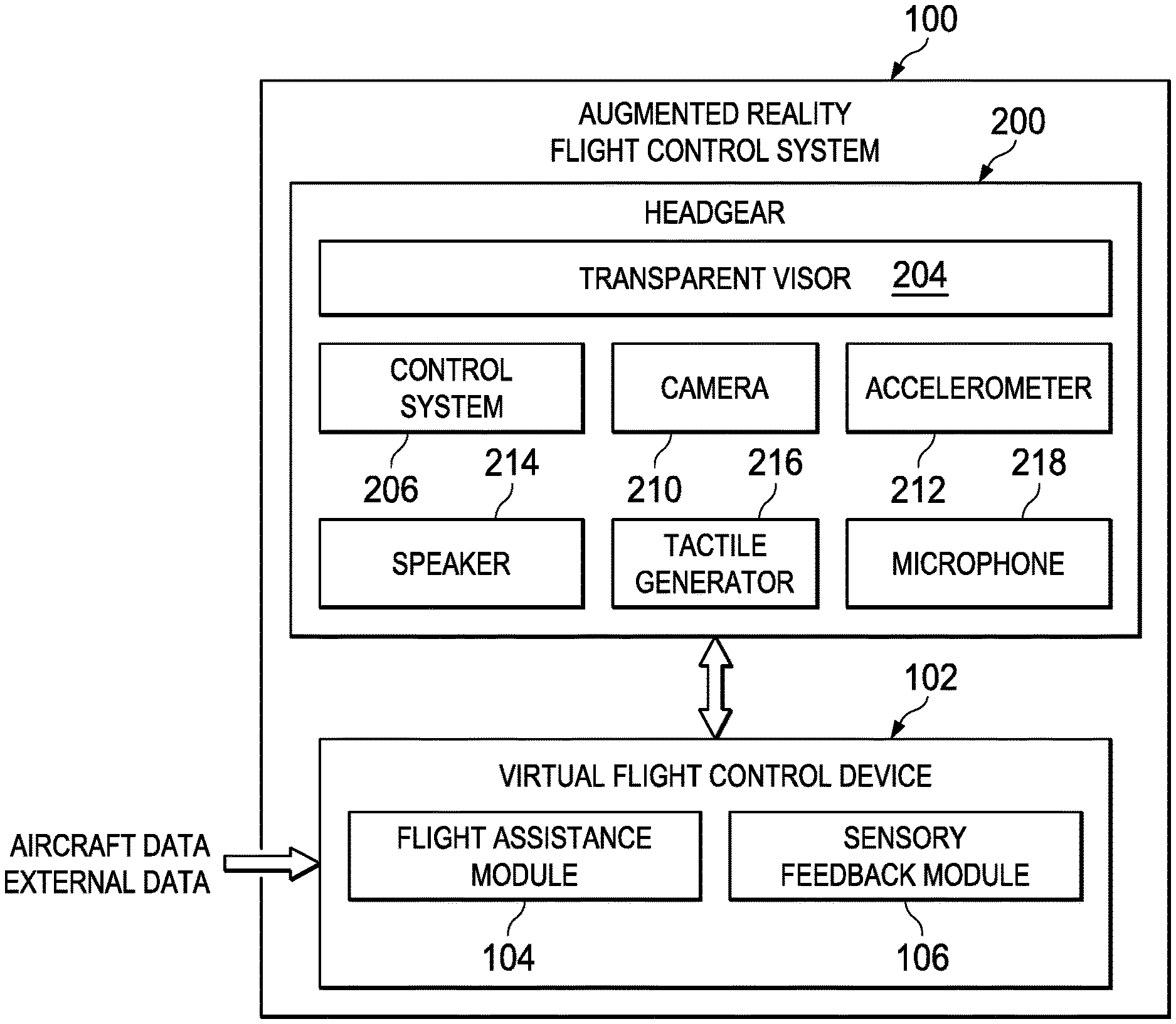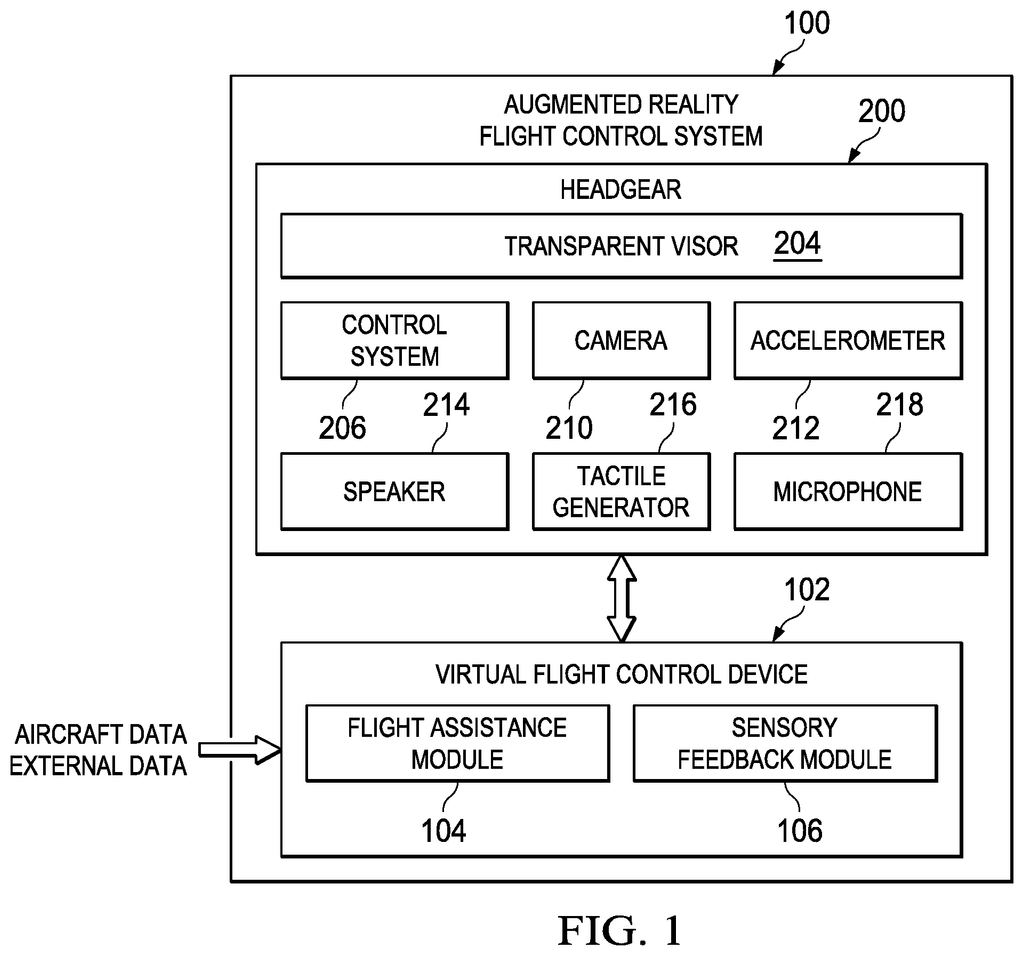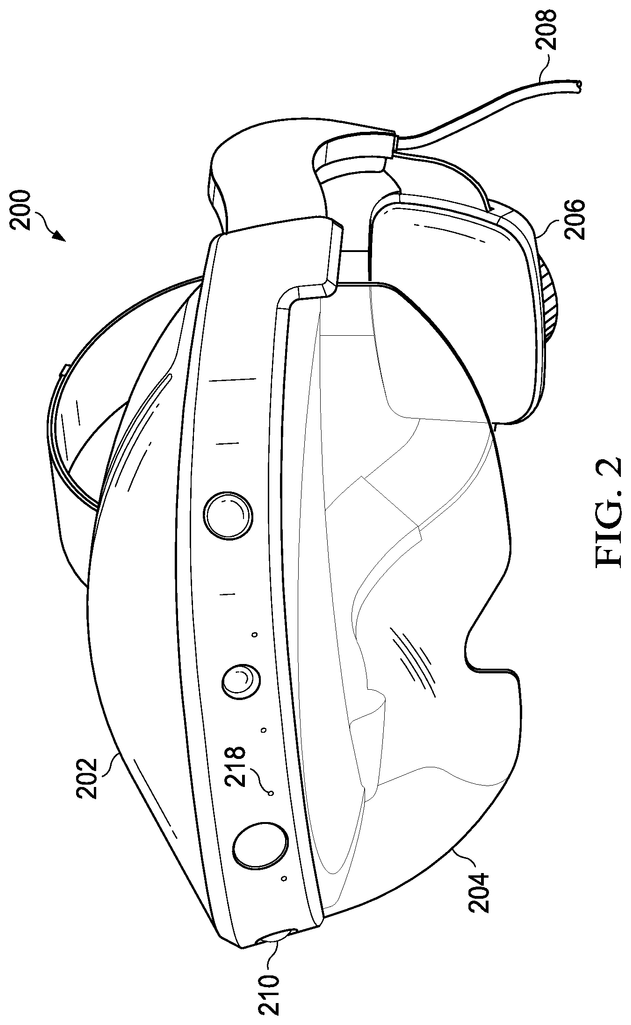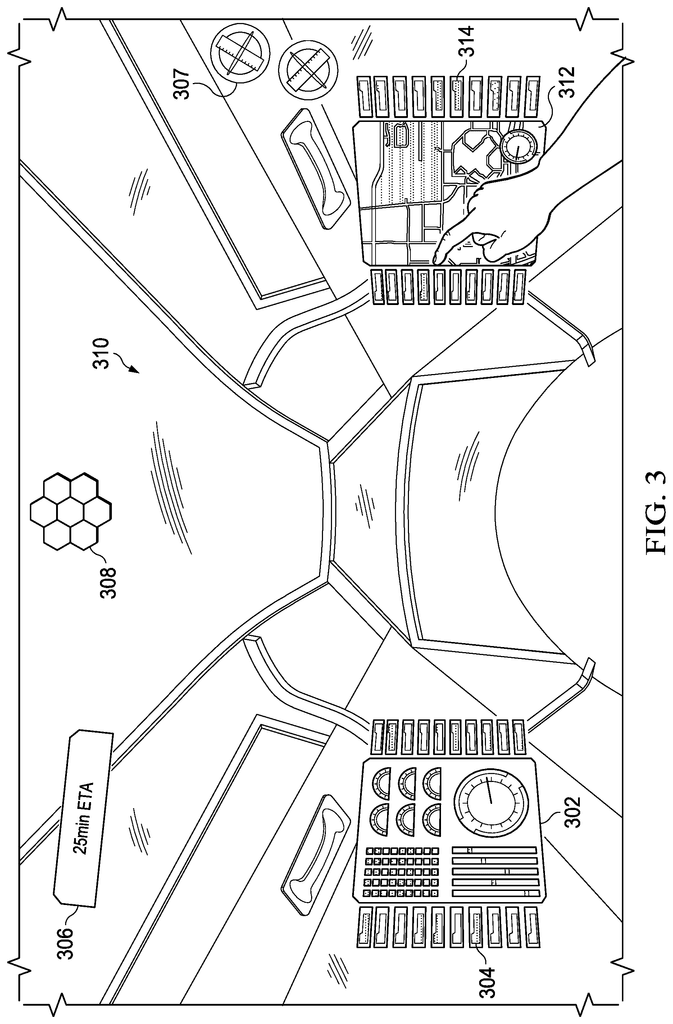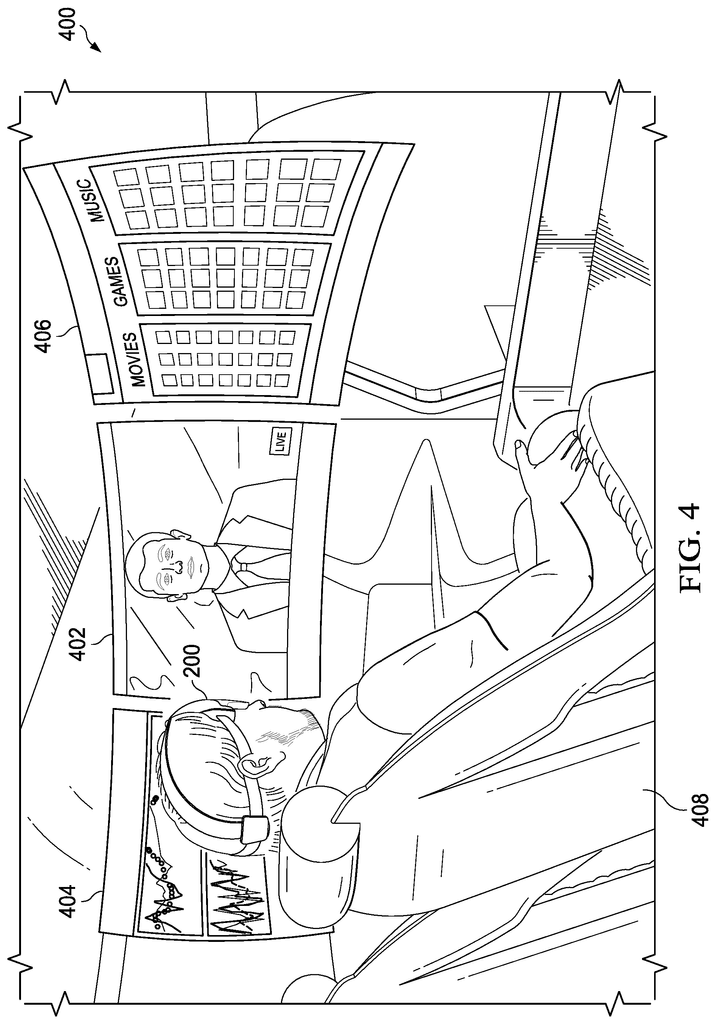Invented by Jeremy Robert Chavez, James R. Williamson, Levi Bilbrey, Textron Innovations Inc
The market for AR systems for pilots and passengers is expected to grow significantly in the coming years. According to a report by MarketsandMarkets, the global AR market is expected to reach $61.39 billion by 2023, growing at a CAGR of 40.29% from 2018 to 2023. The report also states that the aviation industry is expected to be one of the major contributors to this growth.
AR systems for pilots can provide real-time information about the aircraft’s performance, weather conditions, and other critical data. This information can be displayed on the pilot’s heads-up display (HUD), allowing them to make informed decisions quickly. AR systems can also help pilots navigate through complex airspace, reducing the risk of accidents and improving overall safety.
AR systems for passengers can enhance the flying experience by providing them with real-time information about their flight, including flight status, weather conditions, and other relevant information. Passengers can also use AR systems to explore their destination before they arrive, providing them with a more immersive travel experience.
Several companies are already developing AR systems for the aviation industry. Boeing, for example, has developed an AR system called “Boeing SkyView,” which provides pilots with real-time information about the aircraft’s performance and other critical data. Airbus has also developed an AR system called “Airbus Connected Experience,” which provides passengers with real-time information about their flight and destination.
The market for AR systems for pilots and passengers is still in its early stages, but it has significant potential for growth. The adoption of AR systems in the aviation industry can improve safety, enhance the flying experience, and provide airlines with a competitive advantage. As the technology continues to evolve and become more affordable, we can expect to see more airlines and aircraft manufacturers adopting AR systems in the near future.
The Textron Innovations Inc invention works as follows
The present disclosure provides technical advantages by incorporating an augmented-reality flight control system that is integrated into and operated from the pilot’s seat, and a pilot headgear system. This flight control system includes geo-location and artificial intelligence systems to assist in flight. A virtual element is added to real objects to give pilots relevant information during flight. The translucent substrate is placed in the field of vision so that the pilot may see through it and view virtual elements on the substrate. The system comprises a pilot-wearable headgear. The flight assistance module can receive data about the aircraft, and then provide predictive assistance during flight to the pilot based on that data. This is based partly on a profile of the pilot with preferences.
Background for Augmented Reality System for Pilot and Passengers
1. “1.
The present invention relates generally to aircraft, and in particular to aircraft with improved instrumentation and flight controls based on augmented-reality technologies.
2. “2.
The massive instrumentation in front of the cockpit and manual controls are characteristics of conventional aircraft. Massive instrumentation in front of a pilot can obscure the pilot’s vision, which could be crucial in an emergency situation where a clear line of sight is needed to the topography below and ahead of the aircraft.
Weight is an important consideration in all aircraft. It directly impacts fuel efficiency, maneuverability and the ability of the aircrafts to carry payloads. The weight of an aircraft is largely determined by the essential structures, such as the communication equipment, the manual flight controls, and the instrument panels.
Conventional aircraft are characterized by their weight, massive flight control and instrumentation, small interior spaces, and limited functionality.
Newer aircraft have several disadvantages. Newer aircraft typically have more complex components that require power assisted or fully powered control systems. These complex systems demand more cockpit space to accommodate their control, in addition to the massive instrumentation panel. The instrumentation panel is also a source of many injuries to pilots during a crash. “The addition of additional components to the panel will further reduce the working space of the pilot, increase the weight of the aircraft and create an unnecessary risk of injury in a crash.
Traditional aircraft react to the input of the pilot.” The pilot must perform a function in order to change the state of an aircraft. ?Fly-by-wire? Systems are useful to a Pilot, but they are limited by the functionality that can be provided. For example, ?fly-by-wire? Systems such as?fly-by-wire’ do not provide any support for communications, or other data that could be useful to pilots. “They also lack the flexibility to adjust to the preferences and needs of different pilots.
There is a need to develop an aircraft without these shortcomings, so that it is more efficient, safer to operate and has updated flight control and instrumentation.
The aircraft disclosed herein is an aircraft with an integrated augmented reality flight controller that can be operated from the pilot’s seat, and an associated headgear unit. This flight control system includes flight-assist artificial intelligence and geolocation systems.
The invention also includes:
a pilot helmet system that includes a helmet with a transparent visor attached, the visor serving as a screen to project a heads-up displays; a virtual representation of aircraft instrumentation on the visor, which replicates the instrument panel of an advanced helicopter; and a communication headset embedded in the pilot headgear including microphones and loudspeakers.
A virtual display system that can display computer-generated images to present and manipulate at least flight information and flight plans, maps and spatial representations, as well as symbol overlays for landing sites and topographical features.
a configuration of geospatial spaces including defined quadrants to project flight vectors and glidepaths, as well as associated radio frequencies to maintain communications with air traffic controller facilities.
The system includes a “predictive reality” capability that provides the pilot with information about anticipated flight conditions, an automated flight control system which updates the data to the pilot in real-time and a virtual pilot simulated by artificial intelligent.
a voice-recognition system integrated into the headgear of the pilot; and a spatial loudspeaker for reproducing sounds existing in the space that the advanced helicopter occupies; to supplement pilot awareness of flight situations and facilitate avoidance of possible hazards during flight.
The artificial intelligence system can be used to prioritize the information provided to the pilot, filter the information to ensure its accuracy and timeliness, keep the pilot informed of any changes in conditions, develop alternate flight paths, take control of the helicopter to correct the situation and implement the necessary actions and counter maneuvers.
A virtual reality headgear including a helmet with a transparent visor attached, wherein said visor is used as a screen to project a heads-up displays; system applications that provide selected program material from the group of news feeds; entertainment; conferences; flight updates from the pilot and communication with colleagues at remote locations.
Another embodiment includes an augmented-reality flight control system that combines real-world objects and virtual elements in order to provide relevant information to a flight pilot. The translucent substrate is placed in the field of vision so that the pilot may see through it and view virtual elements on the substrate. The system comprises a pilot-wearable headgear. Flight assistance module configured to receive aircraft data and to provide predictive assistance during flight to the Pilot based on received data. The data is based, in part, on a profile of the pilot that includes preferences. Sensory feedback module configured to alert the pilot to received data. Virtual flight control device operably connected with the substrate, headgear and flight assistance module and configured to display virtual elements on substrate. The virtual elements displayed on the substrate allow the pilot to interact with them.
Yet another implementation includes a virtual content control system that incorporates virtual elements in order to provide relevant content while aircraft are flying. The system comprises a headgear that is designed to be worn by passengers. The translucent substrate is placed in the field of vision so that the passenger may see through it and view virtual elements on the substrate. Flight content module receives data about the aircraft, and provides the data as well as additional content to the passenger based on input from the passenger. Virtual control device that is connected to the headgear and substrate and flight content module. The virtual control device can generate and display virtual elements on substrate.
Those with skill in the arts will be able to see other embodiments that are in line with the spirit and scope” of the invention.
Click here to view the patent on Google Patents.
